To many people outside Japan, Shinto is one of the country’s most mysterious and confusing concepts.
“Is it a religion?”
“Where are the holy books or commandments?”
“Don’t most Japanese people say they’re not religious?”
If you’ve ever wondered about these questions, this article is for you. We’ll explore what exactly Shinto is—and more importantly, why it developed uniquely in Japan.
What Is Shinto?
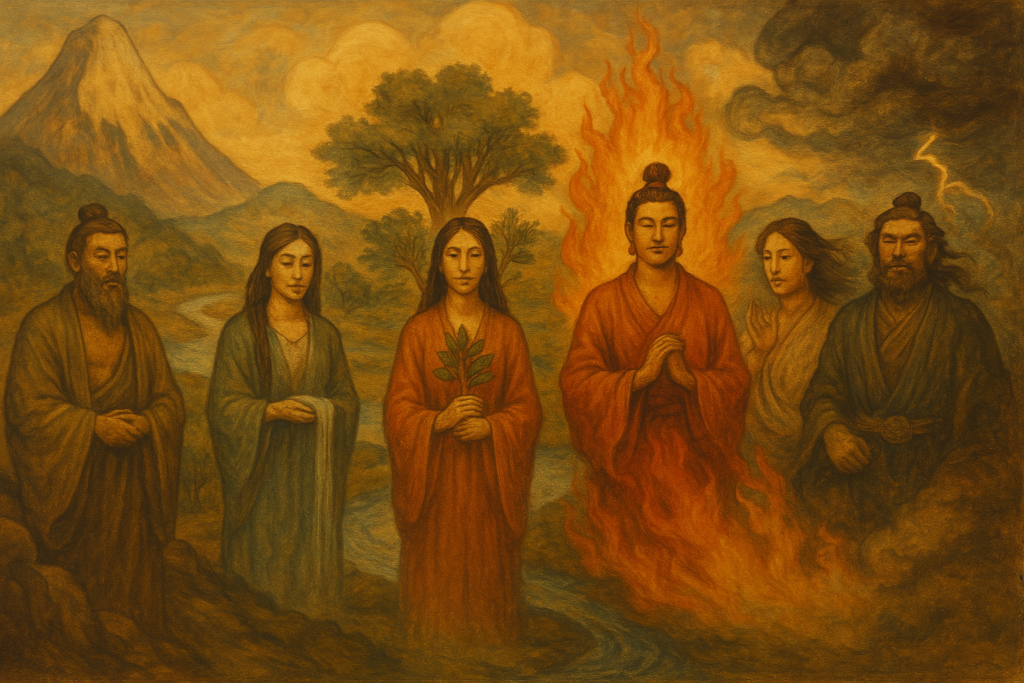
Shinto is Japan’s indigenous belief system, centered around the worship of nature and ancestral spirits.
Unlike many religions, Shinto has no founder, no sacred texts, and no strict doctrines. Instead of “believing” in something, Shinto is more about feeling the presence of the divine in everyday life.
In Shinto, there are said to be “eight million gods” (yaoyorozu no kami)—which actually just means “countless gods.” These spirits inhabit everything in nature: mountains, rivers, trees, fire, wind, thunder—and even objects, buildings, or ancestors.
Shinto isn’t just a religion—it’s a way of life, deeply woven into Japanese culture.
Why Did Shinto Develop in Japan?
🏞 Living with Nature: Gratitude and Awe
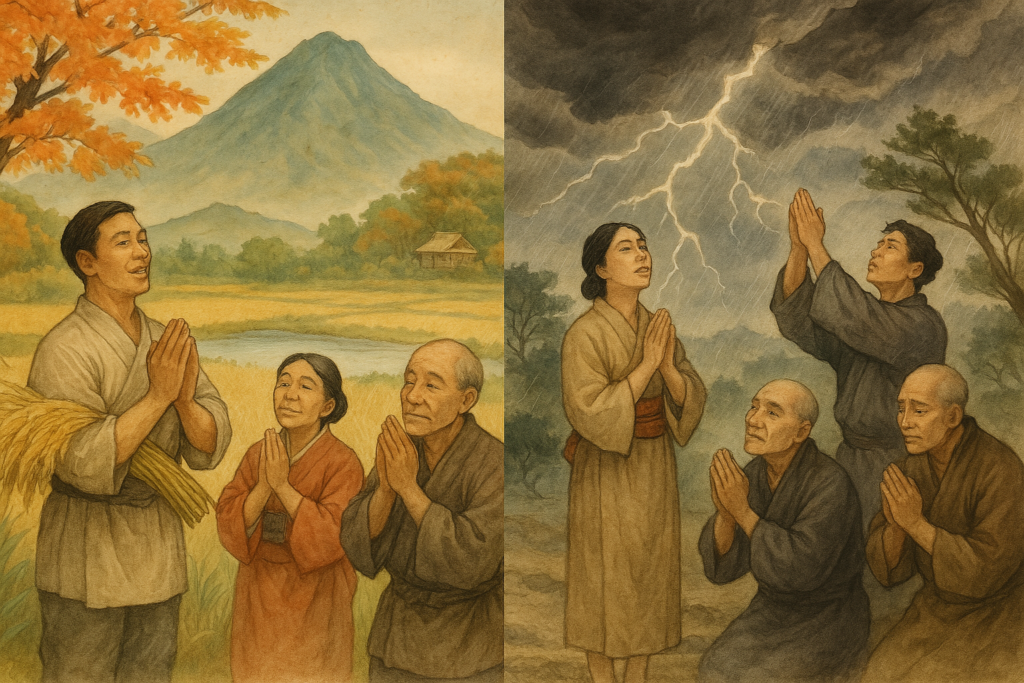
Japan is a country full of natural beauty—mountains, forests, rivers, and seas—and also frequent natural disasters, like earthquakes, typhoons, and volcanic eruptions.
For centuries, Japanese people have lived in both gratitude for nature’s blessings and awe (even fear) of its destructive power.
This close relationship with nature led to the idea that powerful, invisible spirits must dwell in the world around them. That belief became the foundation of Shinto.
In short, Shinto arose from a desire to live in harmony with nature, with deep respect and thankfulness toward the forces that sustain (and sometimes threaten) life.
📜 A Religion Without Writing
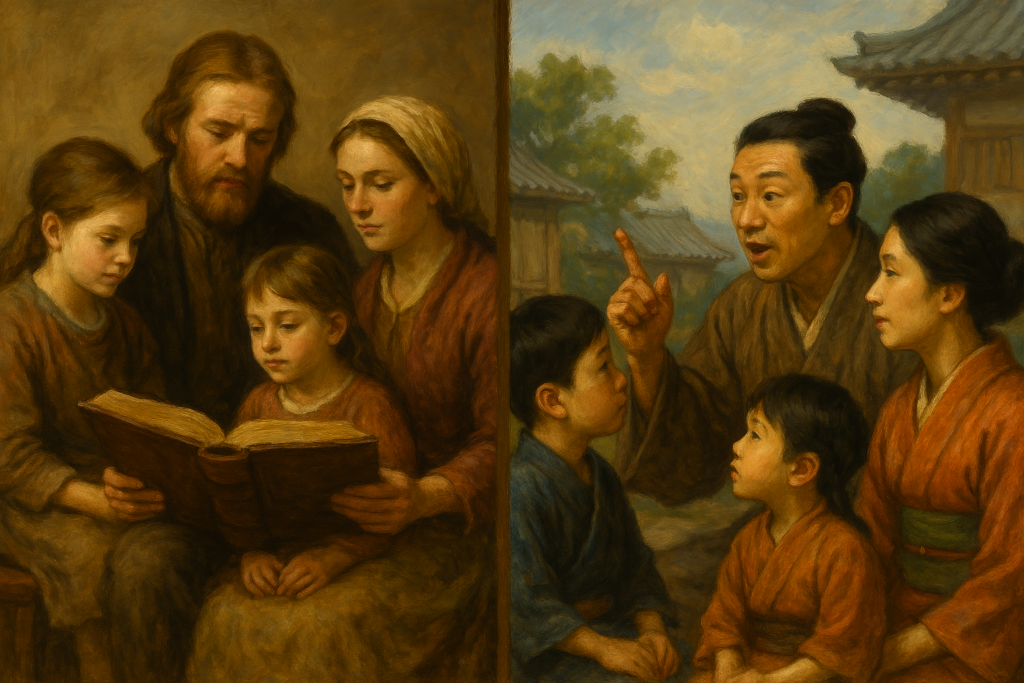
Shinto began long before Japan had writing.
With no sacred texts or scriptures, people passed down beliefs through oral traditions, rituals, and stories. Over time, these formed a kind of flexible, shared worldview rather than a strict doctrine.
Because of this, Shinto remains vague and intuitive. It doesn’t ask you to believe—it invites you to participate.
🏘 Rooted in Community Life
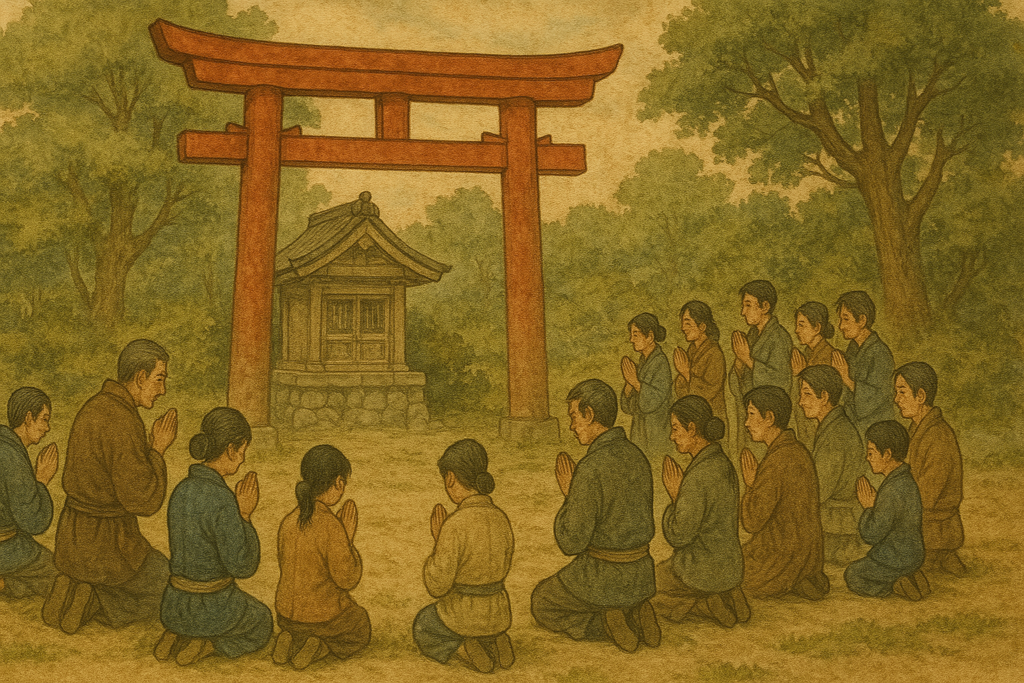
Unlike religions that focus on individual salvation or enlightenment, Shinto is tied to community well-being.
Traditionally, every village or town had its own local shrine dedicated to a specific kami (god). People held festivals and seasonal rituals to express thanks and ask for protection.
Even today, many Japanese people visit shrines for New Year’s, weddings, or local festivals—not out of religious devotion, but as a cultural tradition.
☯ A Gentle Religion That Doesn’t Fight Others
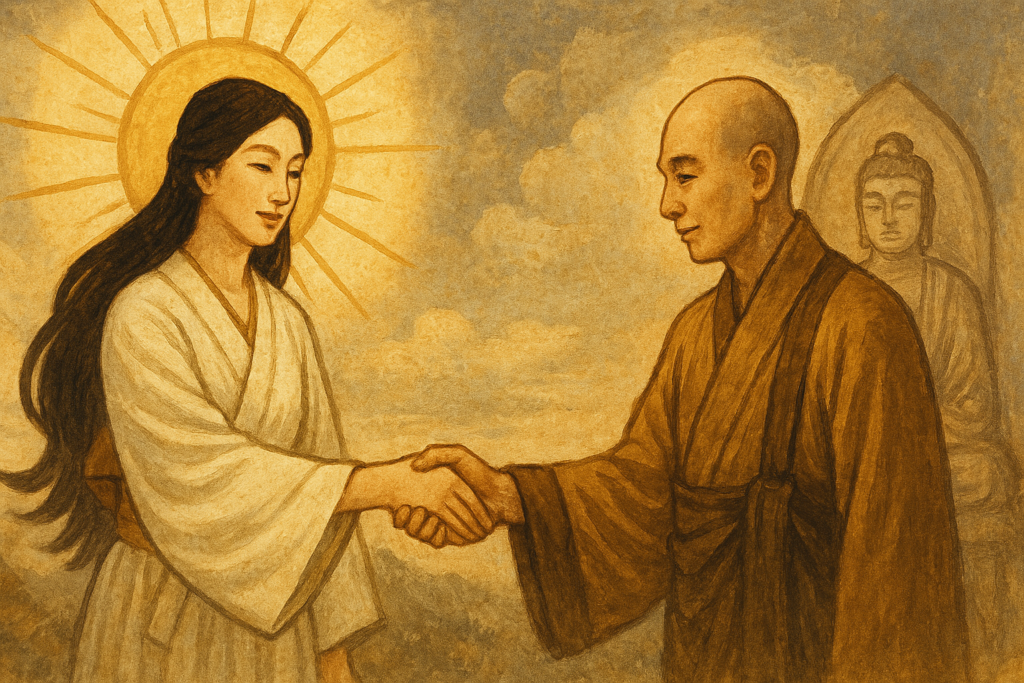
Shinto is a polytheistic belief system, meaning it accepts many gods—and even gods from other traditions.
When Buddhism arrived in Japan in the 6th century, Shinto didn’t resist it. Instead, the two blended together in a process called shinbutsu shūgō (Shinto-Buddhist syncretism).
For centuries, shrines and temples were often built side by side. Some gods were even seen as different forms of Buddhist deities. It wasn’t until the late 1800s that the government officially separated Shinto and Buddhism.
This openness to other beliefs reflects Japan’s broader cultural tendency toward harmony and flexibility.
How Shinto Shaped Japanese Culture

Even today, Shinto continues to influence how Japanese people think and live—often without them realizing it.
• Mottainai (wastefulness is wrong): the idea that even objects have a spirit
• Reading the air: sensing unspoken feelings and social harmony
• Respect for nature: rooted in the belief that nature is sacred
• Emphasis on rituals: formal actions still matter, even without clear beliefs
While many Japanese say they’re “non-religious,” their values and behavior often reflect deep Shinto influence.
How You Can Experience Shinto in Japan
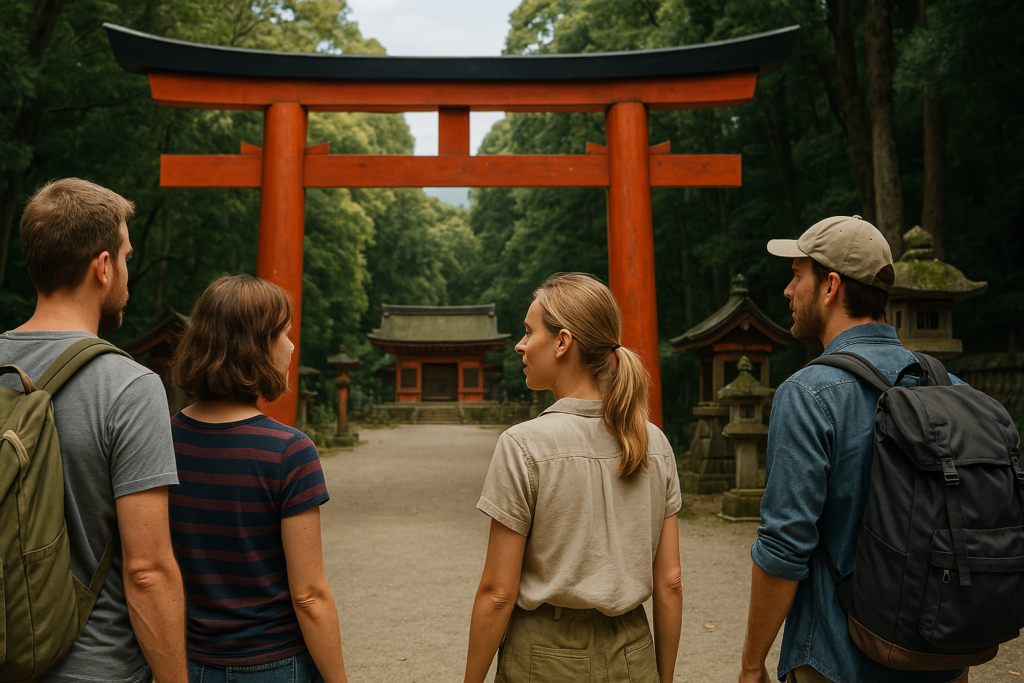
Visiting Japan? You can directly experience Shinto culture through many everyday activities:
• Shrine Visits: Bow before entering the torii gate, cleanse your hands and mouth at the water basin, then pray at the main hall (usually with two bows, two claps, and one final bow).
• Seasonal Festivals: Local matsuri (festivals) are lively events celebrating the gods and community life.
• Shinto Weddings: Traditional Japanese weddings are often held at shrines, with elegant clothing and formal rituals.
• Famous Shrines: Explore historic places like Ise Grand Shrine, Fushimi Inari Taisha, Meiji Shrine, and Izumo Taisha.
Conclusion: Shinto Is Like Air—Invisible but Everywhere
Shinto isn’t something you join. It’s something you live in.
It’s a belief system that grew naturally from Japan’s environment, community traditions, and intuitive worldview.
Its vagueness is not a weakness—it’s what makes it enduring, adaptable, and uniquely Japanese.
If you want to understand Japanese culture on a deeper level, understanding Shinto is an essential first step.
Recommended Articles




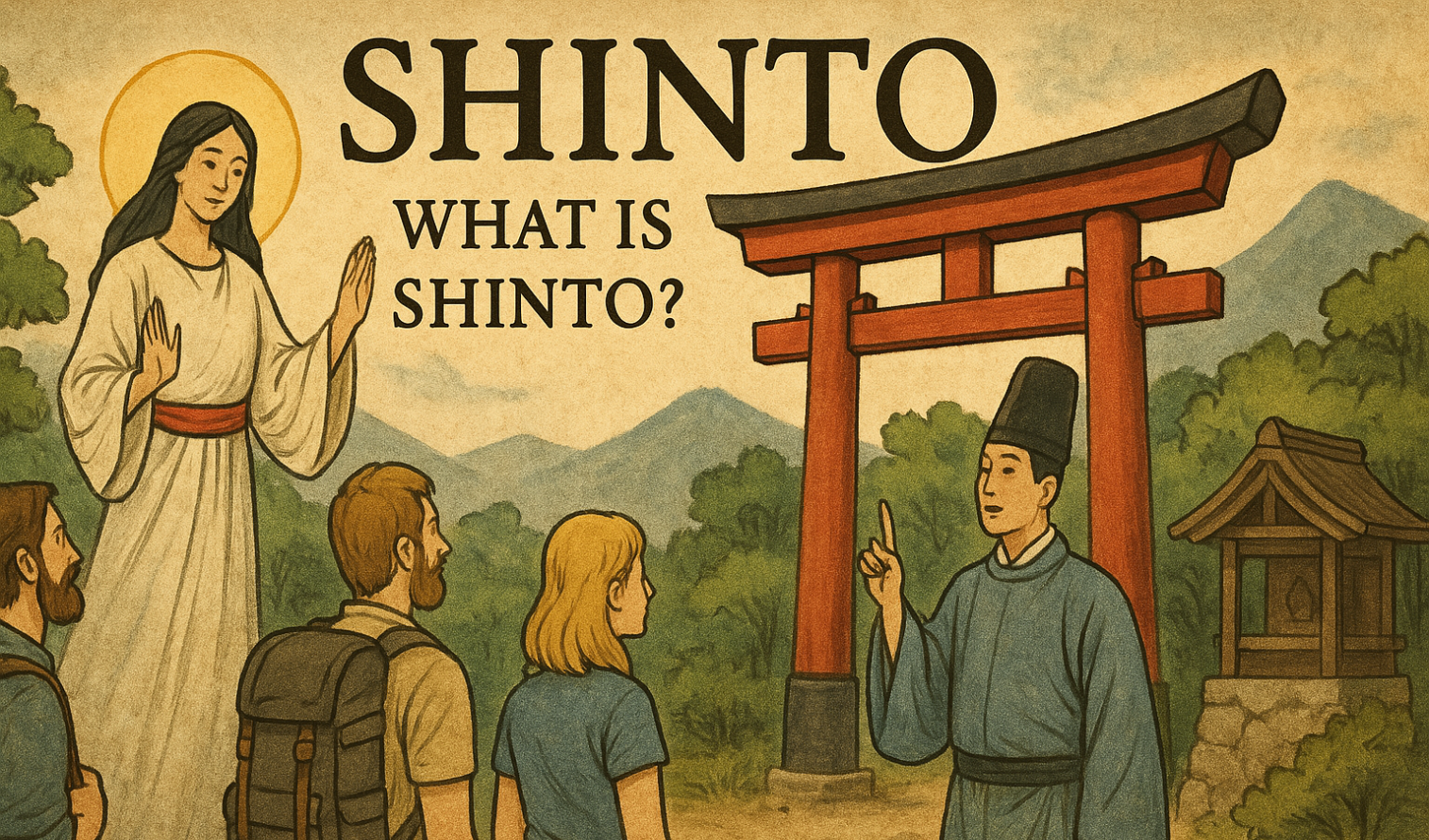

Comments